
Enchanting Peaks of Góry Świętokrzyskie
Discover the ancient allure and natural beauty of Góry Świętokrzyskie, Poland's historic mountain range, perfect for serene hikes, cultural exploration, and family adventures.
Góry Świętokrzyskie, or the Holy Cross Mountains, is one of Poland's oldest mountain ranges, imbued with history and natural beauty. This region is perfect for those who appreciate both serene landscapes and cultural heritage. The mountains are not very high, making them ideal for family hikes and leisurely walks. The highest peak, Łysica, stands at about 612 meters and offers breathtaking panoramic views of the surrounding area. The name Góry Świętokrzyskie comes from the Holy Cross Monastery on Łysa Góra, where relics of the True Cross were once kept. This historic site is a must-visit, providing an intriguing glimpse into Poland's religious past. The monastery also offers a tranquil atmosphere, perfect for reflection and relaxation. Nature enthusiasts will be delighted by the Świętokrzyski National Park, which is rich in diverse flora and fauna. The park is home to ancient beech forests, mysterious rock formations, and a variety of wildlife. Don't miss the chance to explore the natural reserves and enjoy the peaceful surroundings. Góry Świętokrzyskie is also known for its charming villages and small towns, where you can experience traditional Polish culture and hospitality. Local craftsmen and artisans often sell handmade souvenirs, adding a personal touch to your visit. The region’s culinary offerings are another highlight, with hearty dishes that reflect the area's agricultural heritage.
Local tips in Góry Świętokrzyskie
- Visit the Holy Cross Monastery early in the morning to avoid crowds and enjoy the peaceful atmosphere.
- Bring comfortable walking shoes as the terrain can be uneven, especially on hiking trails.
- Check local weather forecasts before planning your hikes, as conditions can change rapidly in the mountains.
- Try local dishes like 'kielbasa' and 'pierogi' in nearby villages for an authentic culinary experience.
- Pick up a map at the Świętokrzyski National Park entrance for guided trails and important information.
Enchanting Peaks of Góry Świętokrzyskie
Góry Świętokrzyskie, or the Holy Cross Mountains, is one of Poland's oldest mountain ranges, imbued with history and natural beauty. This region is perfect for those who appreciate both serene landscapes and cultural heritage. The mountains are not very high, making them ideal for family hikes and leisurely walks. The highest peak, Łysica, stands at about 612 meters and offers breathtaking panoramic views of the surrounding area. The name Góry Świętokrzyskie comes from the Holy Cross Monastery on Łysa Góra, where relics of the True Cross were once kept. This historic site is a must-visit, providing an intriguing glimpse into Poland's religious past. The monastery also offers a tranquil atmosphere, perfect for reflection and relaxation. Nature enthusiasts will be delighted by the Świętokrzyski National Park, which is rich in diverse flora and fauna. The park is home to ancient beech forests, mysterious rock formations, and a variety of wildlife. Don't miss the chance to explore the natural reserves and enjoy the peaceful surroundings. Góry Świętokrzyskie is also known for its charming villages and small towns, where you can experience traditional Polish culture and hospitality. Local craftsmen and artisans often sell handmade souvenirs, adding a personal touch to your visit. The region’s culinary offerings are another highlight, with hearty dishes that reflect the area's agricultural heritage.
When is the best time to go to Góry Świętokrzyskie?
Iconic landmarks you can’t miss
Łysica
Explore the breathtaking beauty of Łysica, the crown jewel of the Świętokrzyskie Mountains, perfect for hiking and nature lovers.

Osada Średniowieczna w Hucie Szklanej pod Świętym Krzyżem
Experience the charm of the Middle Ages at the Medieval Settlement in Huta Szklana, a captivating journey through history and culture.

Swietokrzyski National Park
Explore the lush landscapes and rich biodiversity of Swietokrzyski National Park, a natural paradise in the heart of Poland, perfect for hiking and adventure.

Świętokrzyskie Mountains
Discover the stunning beauty and rich history of the Świętokrzyskie Mountains, an ideal destination for adventure seekers and nature enthusiasts in Poland.

Skała Agaty
Explore the stunning rock formations and serene trails of Skała Agaty in Kielce, a perfect destination for nature lovers and adventure seekers.

Unmissable attractions to see
Ślichowice Rock Reserve
Explore the breathtaking beauty of Ślichowice Rock Reserve, a natural gem in Kielce, Poland, perfect for outdoor adventures and serene escapes.

Muzeum Przyrodnicze Świętokrzyskiego Parku Narodowego na Świętym Krzyżu
Explore the rich biodiversity of the Świętokrzyskie Mountains at the captivating Nature Museum, a must-visit for nature lovers and curious travelers.

Pomnik Stefana Żeromskiego
Explore the Pomnik Stefana Żeromskiego in Święta Katarzyna, a tribute to Poland's literary heritage surrounded by scenic beauty.

Stróżna 367 m.n.p.m
Experience the breathtaking views and serene atmosphere at Stróżna, Krajno-Parcele's hidden tourist attraction, perfect for nature lovers and explorers.

Essential places to dine
Gospoda Echa Leśne
Experience authentic Polish cuisine at Gospoda Echa Leśne, where family-friendly hospitality meets delicious traditional dishes in Łączna.

Karczma Mnicha
Discover authentic Polish cuisine at Karczma Mnicha in Nowa Słupia - where tradition meets flavor in a charming setting.

Restauracja U Kucharzy Kielce
Experience the best of Polish and Italian cuisines at Restauracja U Kucharzy in Kielce – a culinary haven for food lovers.

Chinkalnia Restauracja Gruzińska
Experience authentic Georgian cuisine at Chinkalnia in Kielce - savor rich flavors and warm hospitality in an inviting atmosphere.

Hotel Uroczysko Spa & Wellness
Discover luxury and tranquility at Hotel Uroczysko Spa & Wellness in Cedzyna – your perfect retreat for relaxation and rejuvenation.

Smaczna Chatka w Świętej Katarzynie
Experience authentic Polish cuisine at Smaczna Chatka in Święta Katarzyna – where tradition meets taste in a charming setting.

Żółty Słoń
Experience the exquisite blend of Polish and international cuisine at Żółty Słoń, Kielce's premier fusion restaurant.

Restauracja PoRzeczka
Experience the best of modern European cuisine at Restauracja PoRzeczka in Kielce, where every dish tells a story of flavor and tradition.

Hotel Senator
Experience unparalleled dining and luxurious stays at Hotel Senator in Starachowice—your perfect getaway for relaxation and indulgence.

Świętokrzyski Dwór Restauracja Hotel Wypoczynek Chrzciny Komunie Wesela Konferencje w Górach
Discover the perfect blend of traditional Polish cuisine and serene mountain hospitality at Świętokrzyski Dwór.

Odyssey ClubHotel Wellness & SPA
Discover culinary delights and rejuvenating spa treatments at Odyssey ClubHotel Wellness & SPA in Kielce, Poland - where luxury meets relaxation.

Azzurro
Experience authentic Northern and Southern Italian cuisine at Azzurro in Kielce – where every dish tells a story.

Widnokrąg
Discover Widnokrąg: A unique fusion of Polish cuisine and contemporary art in the heart of Sandomierz.

Restauracja Garaż
Experience the best of American cuisine at Restauracja Garaż in Kielce—where great food meets exciting nightlife.
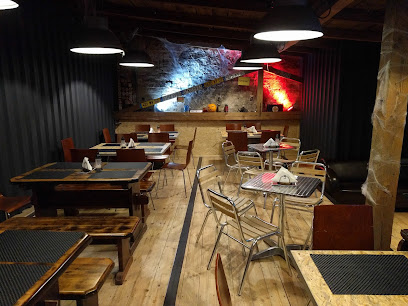
Restauracja Rockabilly Steakhouse and Whisky Bar
Experience the best steaks and whiskies at Rockabilly Steakhouse - A culinary gem in Kielce's vibrant dining scene.

Markets, malls and hidden boutiques
Pasaż Świętokrzyski
Experience the vibrant atmosphere of Pasaż Świętokrzyski, Kielce's ultimate shopping destination with diverse stores and delightful dining options.

Swietokrzyski National Park
Explore the stunning landscapes and rich biodiversity of Swietokrzyski National Park, a perfect destination for hiking and nature lovers in Poland.

Museum of Minerals and Fossils
Explore the geological marvels of the Museum of Minerals and Fossils in Święta Katarzyna, where Earth's history comes to life.

cud miód - autorskie lody i gofry
Discover the sweet indulgence of artisanal ice creams and waffles at Cud Miód in Święta Katarzyna - a delightful treat for every palate.

Delikatesy Centrum
Discover local flavors at Delikatesy Centrum, Bodzentyn's premier grocery store and deli, offering fresh produce and traditional Polish delicacies.

Dom Gościnny Marysieńka Przyjęcia okolicznościowe, Noclegi z wyżywieniem.
Discover the charm of Święta Katarzyna at Dom Gościnny Marysieńka, where comfort meets traditional Polish cuisine in a picturesque setting.

Lewiatan
Explore the local flavors at Lewiatan Grocery Store in Krajno-Parcele, where fresh produce and traditional Polish delicacies await every traveler.

Stokrotka
Explore the flavors of Poland at Stokrotka, Bodzentyn's premier grocery store, featuring local produce and essential goods for your travel needs.

Sklep wielobranżowy - artkuły budowlane i inne
Explore Bieliny's variety store for a mix of construction supplies and local crafts, offering a unique shopping experience in Poland.

Rolnik-1 FHU TWIST SC
Explore the vibrant plants and gardening supplies at Rolnik-1 FHU TWIST SC in Bodzentyn, a serene garden center for nature enthusiasts.

SKLEP CZĘŚCI ZAMIENNYCH DO CIĄGNIKÓW URSUS MF T25 ZETOR C360 C330 C385
Discover Bodzentyn's premier destination for tractor parts and agricultural equipment, supporting local farmers and enthusiasts alike.

Miss Poppy Cheap, Stylish and Convenient
Discover stylish, affordable fashion at Miss Poppy in Bodzentyn, a charming used clothing store perfect for eco-conscious travelers.

General store
Discover the charm of Górno at the local general store, where authentic flavors and community spirit come together.

Tu i teraz Góry Świętokrzskie
Experience the breathtaking beauty of Tu i teraz Góry Świętokrzyskie, where nature meets comfort in a serene mountain retreat.
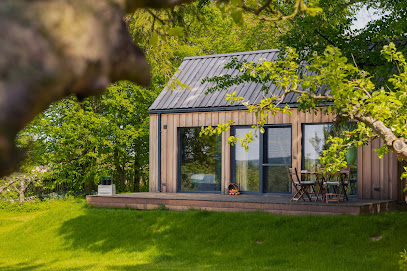
Sklep wielobranżowy U Iwonki
Explore Sklep wielobranżowy U Iwonki, a delightful variety store in Bieliny, offering beauty supplies, clothing, and unique fashion accessories.

Essential bars & hidden hideouts
Bar Leśny
Discover the delightful charm of Bar Leśny in Złota Woda, where refreshing beverages and stunning natural beauty meet.

Ministerstwo Śledzia i Wódki
Discover the heart of Polish cuisine at Ministerstwo Śledzia i Wódki, where herring and vodka come together in a charming gastropub setting.

CKM
Discover CKM in Kielce, a premier brewpub offering an unmatched selection of craft beers and delicious local cuisine in a vibrant atmosphere.
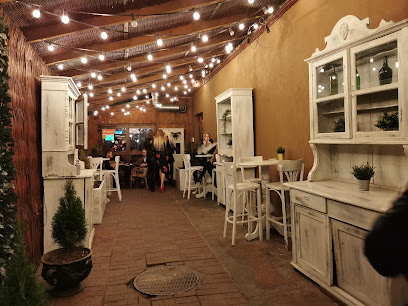
Klubokawiarnia Quest
Experience the vibrant atmosphere of Klubokawiarnia Quest in Kielce, a unique coffee shop and night club that blends relaxation with lively entertainment.

Zajazd Na Widoku
Discover the flavors of Poland at Zajazd Na Widoku, a charming restaurant in the heart of Krajno Pierwsze, offering authentic cuisine and stunning views.

Bar Planty
Experience the charm of Bar Planty in Kielce, where delightful local flavors meet a friendly atmosphere for an unforgettable time.
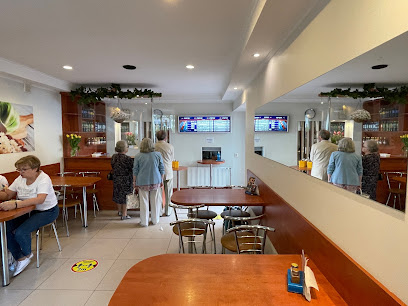
Panta Rhei Pub :: Klub Bilardowy
Discover Kielce's lively sports bar, Panta Rhei Pub, where thrilling games and great company create unforgettable nights.
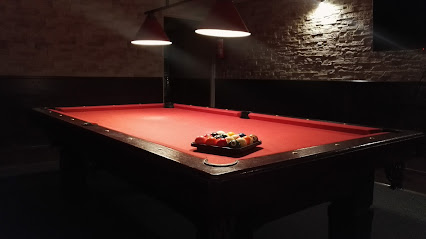
80's
Discover the lively 80's Brewpub in Kielce, where craft beer meets retro vibes for an unforgettable night out.

Bar Pstrąg Wilków
Discover the authentic taste of Poland at Bar Pstrąg Wilków, where tradition meets flavor in a cozy atmosphere.
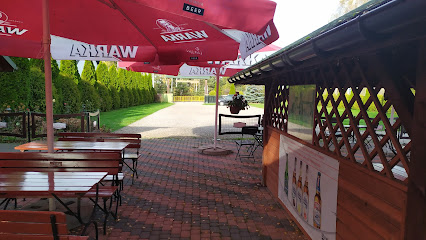
Bar mini
Experience the charm of Wola Kopcowa at Bar Mini, your cozy retreat for delightful drinks and local flavors.

Barek plażowy
Discover the flavors of the coast at Barek Plażowy, where fresh seafood meets stunning ocean views for an unforgettable dining experience.

Bar letni
Discover the charm of Bar Letni in Kaniów, offering a cozy atmosphere and a delightful selection of beverages for an unforgettable experience.

Bar Danusia
Discover the charm of Bar Danusia, a cozy lounge in Górno, Poland, offering a welcoming atmosphere and an array of delightful beverages.

Bar przy kąpielsku
Experience the warm hospitality of Bar przy kąpielsku, a charming bar in Borków perfect for unwinding and enjoying local flavors.
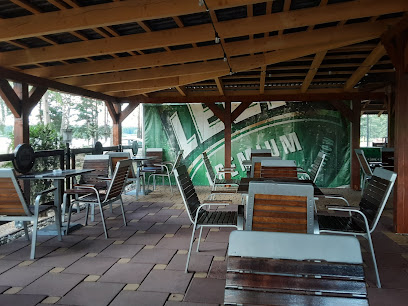
Zapiekanki i frytki belgijskie
Discover the best of Polish street food at Zapiekanki i Frytki Belgijskie, where delicious zapiekanki and crispy fries meet stunning views in Krajno Pierwsze.

Local Phrases about Góry Świętokrzyskie
-
- HelloCześć
[cheshch] - GoodbyeDo widzenia
[doh veed-zen-ya] - YesTak
[tahk] - NoNie
[nyeh] - Please/You're welcomeProszę
[proh-sheh] - Thank youDziękuję
[jyen-koo-yeh] - Excuse me/SorryPrzepraszam
[psheh-prah-sham] - How are you?Jak się masz?
[yahk shen mahsh] - Fine. And you?Dobrze. A ty?
[doh-bzheh. ah tih] - Do you speak English?Czy mówisz po angielsku?
[chi moov-eesh poh ahn-gyehl-skoo] - I don't understandNie rozumiem
[nyeh roh-zoo-myem]
- HelloCześć
-
- I'd like to see the menu, pleaseChciałbym zobaczyć menu, proszę
[h-chyah-bim zoh-bah-chich meh-noo, proh-sheh] - I don't eat meatNie jem mięsa
[nyeh yem myen-sah] - Cheers!Na zdrowie!
[nah zdroh-vee-yeh] - I would like to pay, pleaseChciałbym zapłacić, proszę
[h-chyah-bim zah-plah-cheech, proh-sheh]
- I'd like to see the menu, pleaseChciałbym zobaczyć menu, proszę
-
- Help!Pomocy!
[poh-mo-tsi] - Go away!Idź sobie!
[ee-je shoh-bee] - Call the Police!Zadzwoń po policję!
[zahd-zvon poh po-lee-tsyeh] - Call a doctor!Zadzwoń po lekarza!
[zahd-zvon poh leh-kah-zah] - I'm lostZgubiłem się
[zgoo-bee-wem sheh] - I'm illJestem chory
[yes-tehm hoh-ri]
- Help!Pomocy!
-
- I'd like to buy...Chciałbym kupić...
[h-chyah-bim koo-peech] - I'm just lookingTylko się rozglądam
[tih-ko sheh rohz-gwah-dahm] - How much is it?Ile to kosztuje?
[ee-leh toh kohsh-too-yeh] - That's too expensiveTo jest za drogie
[toh yest zah droh-gyeh] - Can you lower the price?Czy można obniżyć cenę?
[chi moh-nah ohb-nee-zhich cheh-neh]
- I'd like to buy...Chciałbym kupić...
-
- What time is it?Która jest godzina?
[ktoo-rah yest goh-dzee-nah] - It's one o'clockJest pierwsza
[yes-teh pyeh-roo-shah] - Half past (10)Pół do dziesiątej
[poow doh dzyeh-shon-teh] - MorningRano
[rah-noh] - AfternoonPopołudnie
[poh-poo-wood-nyeh] - EveningWieczór
[vyeh-choor] - YesterdayWczoraj
[v-cho-rah-y] - TodayDziś
[jeesh] - TomorrowJutro
[yoo-troh] - 1Jeden
[yeh-den] - 2Dwa
[dvah] - 3Trzy
[tshih] - 4Cztery
[ch-teh-ri] - 5Pięć
[pye-ny-ch] - 6Sześć
[shesh-ch] - 7Siedem
[shyeh-dem] - 8Osiem
[oh-shyem] - 9Dziewięć
[dzyeh-vee-nyeh] - 10Dziesięć
[dzyeh-shon-tyeh-ch]
- What time is it?Która jest godzina?
-
- Where's a/the...?Gdzie jest...
[g-jeh yest] - What's the address?Jaki jest adres?
[yah-ki yest ah-drehs] - Can you show me (on the map)?Czy możesz mi pokazać (na mapie)?
[chi moh-zhesh mee poh-kah-zah-ch (nah mah-pyeh)] - When's the next (bus)?Kiedy jest następny (autobus)?
[kyeh-dee yest nah-step-ny (ow-toh-boos)] - A ticket (to ....)Bilet (do ....)
[bee-let (doh)]
- Where's a/the...?Gdzie jest...
History of Góry Świętokrzyskie
-
The Góry Świętokrzyskie, or Holy Cross Mountains, have been inhabited since prehistoric times. Archaeological finds suggest that early human settlements existed here as far back as the Paleolithic era. These ancient communities left behind tools and artifacts that provide a glimpse into their daily lives and survival strategies. The region later became home to various Celtic tribes, who are believed to have established fortified settlements known as oppida.
-
One of the most enduring legends associated with the Góry Świętokrzyskie is that of Saint Emeryk, a Hungarian prince. According to local folklore, Saint Emeryk visited the region in the 11th century and was so enchanted by its beauty that he decided to build a monastery. This monastery eventually became the Święty Krzyż (Holy Cross) Monastery, which remains a significant religious site to this day.
-
The Święty Krzyż Monastery, founded in the 11th century, is one of the oldest and most important religious sites in Poland. It is named after a relic of the True Cross that is said to be housed within its walls. The monastery has witnessed numerous historical events, including invasions, plagues, and political upheavals. It also played a crucial role in the spread of Christianity throughout the region.
-
During the medieval and Renaissance periods, the Góry Świętokrzyskie region flourished. It became a center for mining and metallurgy, thanks to its rich deposits of iron ore and other minerals. Towns such as Nowa Słupia and Bodzentyn grew in prominence, attracting craftsmen, merchants, and scholars. This era also saw the construction of numerous castles and fortifications to protect against invaders.
-
The mid-17th century brought turmoil to the Góry Świętokrzyskie region with the Swedish Deluge, a series of wars and invasions by the Swedish Empire. The Święty Krzyż Monastery and surrounding areas suffered significant damage during this period. Despite the destruction, the resilience of the local population ensured that the region eventually recovered and continued to thrive.
-
The 19th century was a time of nationalistic fervor and uprisings against foreign rule in Poland. The Góry Świętokrzyskie region played a key role in several of these insurrections, including the November Uprising (1830-31) and the January Uprising (1863-64). The rugged terrain and dense forests provided ideal conditions for guerrilla warfare and hiding places for insurgents.
-
During World War II, the Góry Świętokrzyskie region became a hotbed of resistance against Nazi occupation. Various partisan groups, including the renowned Home Army (Armia Krajowa), utilized the mountains' challenging terrain to launch sabotage operations and hide from German forces. The region's contribution to the Polish resistance is commemorated through numerous monuments and memorials.
-
After World War II, the Góry Świętokrzyskie region underwent significant reconstruction and modernization. The establishment of the Świętokrzyski National Park in 1950 helped to preserve the area's natural beauty and biodiversity. Today, the region is a popular destination for both tourists and scholars, offering a rich tapestry of historical, cultural, and natural attractions.
Góry Świętokrzyskie Essentials
-
Góry Świętokrzyskie is located in central Poland, in the Świętokrzyskie Voivodeship. The nearest major city is Kielce, which is well-connected by train and bus from other major Polish cities such as Warsaw, Krakow, and Łódź. The closest international airports are Warsaw Chopin Airport and Krakow John Paul II International Airport. From these airports, you can take a train or bus to Kielce and then a local bus or taxi to the Góry Świętokrzyskie region.
-
Once you are in the Góry Świętokrzyskie region, you can use local buses to get around. Kielce serves as the main hub for public transportation in the area. Taxis are also available, and car rental services can be found in Kielce for those who prefer to explore at their own pace. Some of the attractions are best reached by hiking, so good walking shoes are recommended.
-
The official currency in Poland is the Polish Złoty (PLN). Credit and debit cards are widely accepted in cities and larger towns, but it is advisable to carry some cash, especially when visiting rural areas and small villages. ATMs are available in Kielce and other major towns in the region. Currency exchange services can be found at airports, banks, and some hotels.
-
Góry Świętokrzyskie is generally a safe destination for tourists. However, as with any tourist destination, it is wise to take precautions. Avoid walking alone at night in unfamiliar areas and be cautious with your belongings in crowded places. While there are no specific high-crime areas targeting tourists, it is always best to stay vigilant and aware of your surroundings.
-
In case of an emergency, dial 112 for immediate assistance. This number works for police, medical emergencies, and fire services. Kielce has well-equipped hospitals and medical facilities. It is recommended to have travel insurance that covers medical emergencies. Pharmacies are readily available in towns and cities for minor health issues.
-
Fashion: Do dress modestly, especially when visiting religious sites. Avoid overly casual or revealing clothing. Religion: Do respect local customs and traditions, especially in churches and monasteries. Public Transport: Do give up your seat to elderly passengers and avoid loud conversations. Don't eat or drink on public transport. Greetings: Do greet people with a handshake and maintain eye contact. Eating & Drinking: Do try local dishes and accept food offerings graciously. Don't refuse hospitality, as it is considered impolite.
-
To experience Góry Świętokrzyskie like a local, visit the local markets and try regional specialties such as 'żurek' (sour rye soup) and 'kiełbasa' (Polish sausage). Engage with locals, who are often friendly and willing to share stories about the region's history and culture. Don't miss visiting the Holy Cross Monastery, Łysica Mountain, and the Świętokrzyski National Park. For a unique experience, attend a local festival or event to see traditional dances and crafts.
Nearby Cities to Góry Świętokrzyskie
-
Things To Do in Radom
-
Things To Do in Tarnow
-
Things To Do in Krakow
-
Things To Do in Rzeszow
-
Things To Do in Lublin
-
Things To Do in Czestochowa
-
Things To Do in Lodz
-
Things To Do in Warsaw
-
Things To Do in Gliwice
-
Things To Do in Bielsko-Biala
-
Things To Do in Zakopane
-
Things To Do in Poprad
-
Things To Do in Opole
-
Things To Do in Prešov
-
Things To Do in Ostrava













